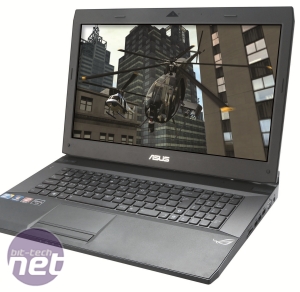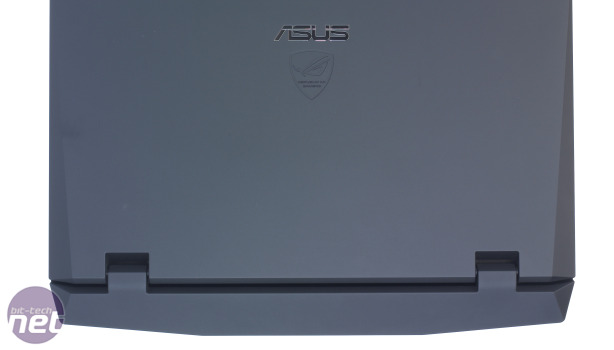Asus G73Jh-TX008V Gaming Laptop Review
Manufacturer: AsusUK price (as reviewed): £1,804.80 inc VAT
US price (as reviewed): Only different specifications available
Apparently, gamers have no appetite for subtlety when it comes to style, colours and flashing lights. As such, gaming PCs tend to resemble the Blackpool Illuminations, while gaming laptops have more lights than a 1980s revival disco. We expected the same from Asus’ latest Republic of Gamers laptop, so we were surprised by its velvety, matt-black exterior and the Lamborghini Gallardo-influenced angles, complete with exhaust-shaped vents at the rear.
The G73Jh doesn’t weigh a ton either, and even when we turned it on, it had only subtle lights for WiFi, overclocking and so forth, and a slight blue glow beneath the screen. There’s an Intel Core i7 processor and an ATI Mobility Radeon HD 5870 inside – this isn’t just a chic laptop, it’s also one of the fastest ever.


What to use as a reference item to show how large the power brick is? Maybe Harry's desk will have something handy... Click to enlarge.
As with most laptop technology, you shouldn’t expect the same level of performance as a desktop, even if the laptop parts share the same names as the desktop. The CPU is the Core i7-720QM, the third highest in the range, yet it’s nominally clocked at a meagre 1.6GHz. It may be a Hyper-Threaded quad-core CPU, but that seems paltry when decent desktop processors are a full 1GHz faster.
Note that we used the word ‘nominally’ – the CPU is based on Clarksfield, which is the mobile version of the Lynnfield architecture of LGA1156 Core i5 and Core i7 CPUs. As such, it has Turbo Mode (Rev 2) and can boost its speed to 2.8GHz when necessary, and drop as low as 996MHz when idle to cut down on heat, noise and power consumption.

The Asus G73 has a shaped rear, with air vents that look like a Gallardo's exhausts. Click to enlarge.
Unlike the nominally 1.73GHz Core i7-820QM, the i7-720QM has only 6MB of Level 3 cache rather than 8MB. More is better, and Intel always equips its flagship CPUs with 2MB of highest-level cache per physical core.
Equally, the ATI Mobility Radeon HD 5870 isn’t the equal of its desktop relative, thanks to the small dimensions of the card and the limited cooling ability of a laptop. While a desktop HD 5870 packs 1,600 stream processors into the GPU, which run at 850MHz, the laptop equivalent has half the number of stream processors and runs at 700MHz. However, the laptop GPU has more than half the number of transistors and a TDP of 50W, while the desktop card consumes 188W (ATI doesn’t quote directly comparable power and heat figures for the desktop and laptop parts).
However, with 800 stream processors, the Radeon Mobility HD 5870 is closer in configuration to the capable, but mid-range Radeon HD 5770 desktop card, although it has a slower GPU (700MHz compared to 850MHz).
Still, with a ludicrous 8GB of 1,333MHz DDR3 memory, our review version of the G73 was hardly likely to be slow. Asus has seen fit to pack in two 500GB Seagate Momentus 7200.4 hard disks, and as their name suggests, these have spindle speeds of 7,200rpm rather than the typical 5,400rpm of laptop hard disks. Around the sides of the laptop are four USB 2 ports, an SD/MMC/MS media card reader, jacks for a headset (the audio codec supports EAX 4.0), and D-Sub and HDMI video outputs.

MSI MPG Velox 100R Chassis Review
October 14 2021 | 15:04









Want to comment? Please log in.